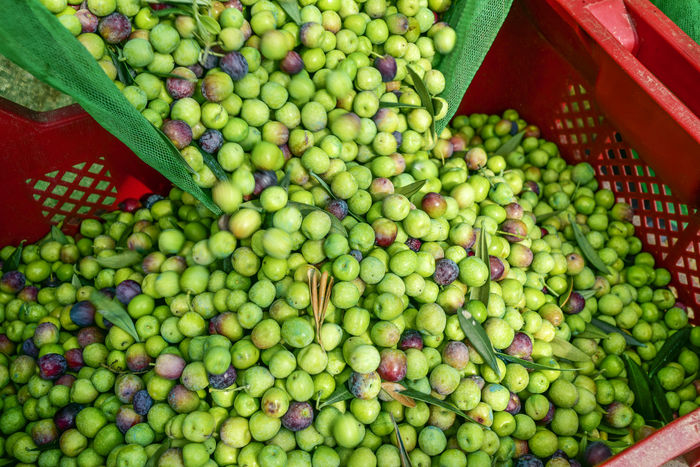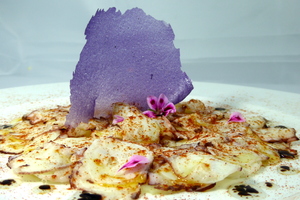Arbequina olive oil
Arbequina olive oil is obtained from the Arbequina olive once the olives have been pressed, filtrated and bottled, always mechanically handled. That is why solvents are not used to correct quality mistakes, which is permitted in other seed and olive oils.
Arbequina is an olive variety (Olea europaea) from Palestine.
It was first introduced to Spain from Palestine in the seventeenth century by the Duke of Medinaceli. This nobleman lived in the castle palace of Arbeca, in Catalonia, and the oil takes its name from this village.
One of the main characteristics of the Arbequina tree is its adaptability to different conditions of climate and soil, although it does best in alkaline soils, being frost-hardy and pest-resistant. The size of its fruit is the smallest among those varieties grown in Spain, between one and two grams.
Besides being sold as a table olive, Arbequina olives are mostly used for high quality olive oil production. Oils made from Arbequina are generally buttery, with a slightly spicy, mild flavour.
-
Type of dish
- Beers
- Cocktails
- Breakfasts and brunch
- Burguers
- Juices, milkshakes and beverages
- Shellfish
- Bread and pastries
- Pizzas, patty
- Dessert
- Pasta
- Sándwich
- Pastries
- Finger foods
- Ice creams and sorbets
- Legumes
- Salads
- Eggs
- Patty
- liqueur
- Harvard plate
- Main course
- Meats
- Fish
- Birds
- Vegetables
- Soups and creams
- Rices
- Coffee, chocolate and infusion
- Cheeses
- Appetizers and canapes
- Temperature
- Cuisine type
- Additional culinary preparation
- Conservation technique
- Seasonal recipes
-
- Aromatic herbs
- Beverages
- Big game hunt
- Bread and pastries
- Canned goods and pickles
- Cereals
- Condiments, spices and additives
- Cooked, salted, preserved and cold meats
- Dried fruits and nuts
- Dry pulses
- Edible oils and vinegars
- Eggs and derivatives
- Feathered game hunt
- Fish cuts
- Fishes
- Insects
- Kitchen and bakery tecniques
- Kitchen and bakery utensils
- Meat cuts
- Meats
- Milk, cream and derivatives
- Mushrooms
- Offal
- Pasta, rice, flour and derivatives
- Poultry
- Seafood
- Service techniques
- Service utensils
- Vegetables cuts
- Vegetables, fruits, tubers and seaweed


